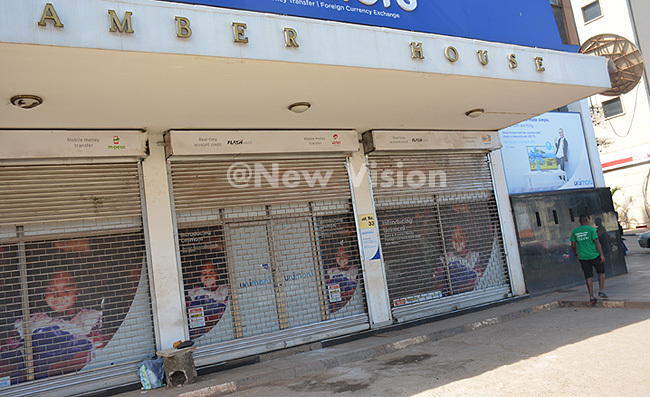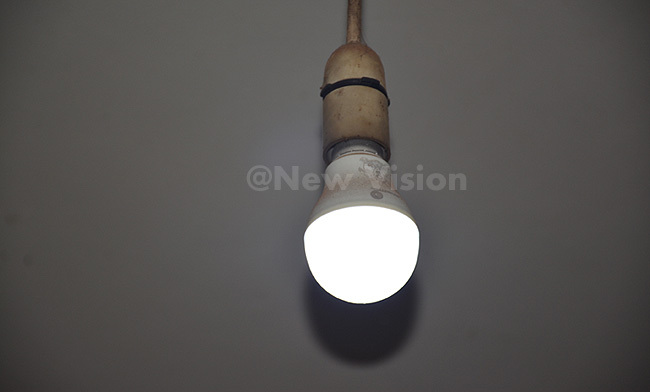How a city building has cut its energy bill
Old buildings are guilty of wastefulness and are also costly to keep running, especially when it comes to energy and water bills.
ENERGY & ENVIRONMENT
KAMPALA - Amber House on Kampala and Speke Roads stands out in the heart of Uganda's capital.
The iconic structure was built in 1953 and on the outside, it cuts a figure of an old building. But when you consider what is happening on the inside, Amber House is raring to catch up with modern times.
It is adapting to what green or sustainable buildings are doing.
The modern versions of Amber House have been equipped with new technologies aimed at reducing the impact on the environment, thanks to the efficient use of energy, water and other resources.
Old buildings are guilty of wastefulness and are also costly to keep running, especially when it comes to energy and water bills.
A cost-cutting strategy
Charity begins at home, the saying goes. Inside Amber House, which houses the energy ministry offices, a revolution is taking shape.
According to James Banaabe, a commissioner in the ministry, the staff at Amber House are becoming conscious about the need to avoid profligacy. And when you look at the latest bills, the results are showing -- in a positive way.
The building now consumes less than half of the energy it was using before green technologies were introduced, according to Maclean Senyonga, an energy auditor.
"If you do not need something, why should you use it? This is about conservation. If you use power, then you have to use it efficiently to avoid wastefulness," he says.
Mindset and habits are fast-changing among the staff.
"You know, Amber House is an old building, so you have to switch lights on even during the day. But it is possible to reduce energy by using energy-saving bulbs or LEDs (light-emitting diodes)," says Senyonga.
Previously, Amber House was paying up to sh1.5m every day on energy alone. The energy bill has since reduced two-fold (to sh700,000), according to Senyonga, who projects that by the end of this year, the energy bill will plunge even further to sh500,000.
The ministry has been replacing inefficient lights with LED lights that consume less energy.
"Can you imagine some people do not switch off their computers yet they consume power through the night?" wonders Senyonga.
 A revolution is taking shape inside the energy ministry offices. (Credit: Gerald Tenywa)
A revolution is taking shape inside the energy ministry offices. (Credit: Gerald Tenywa)
To deal with wastefulness, mindset has to change first. People need to understand and appreciate the new practice before taking action. That's what happened with the energy ministry fraternity.
Then, in some instances, the number of printers was reduced to one in a department, placed in the conference room where it is accessed by many people.
"We have saved energy that would be spent on many printers and this is one of the ways we have reduced the money spent on energy," Senyonga weighs in.
Countrywide energy audit
Meanwhile, the energy ministry has conducted a free energy audit for different buildings and enterprises across the country, purposefully to illustrate to business enterprises just how costly inefficient technologies are.
It is understood that all facilities, including buildings, were found to be wasteful. Some businesses have since taken action and are pursuing a path that will help them spend less and get more.
"There is some light at the end of the tunnel," says Senyonga, who adds that putting in place energy conservation and efficient initiatives is currently voluntary, but this will change particularly for the big consumers of power in the near future.
Conserving energy and efficient use of energy will become an obligation for industries once the Energy Conservation Bill is passed into law, according to Senyonga.
"It is possible to save energy by 30% or 50% by embracing green technologies."
Barriers to green technologies
Asked why Ugandans are sluggish in embracing green technologies despite the advantages, Senyonga points out the lack of awareness as one of the barriers.
The high cost of upfront cost is another challenge.
Green technologies such as LED lights are more expensive than the inefficient technologies. For instance LED lights cost sh10,000. So for 1,000 lights, you would have to part with sh10m.
 The energy ministry has conducted a free energy audit for different buildings and enterprises across the country. (Credit: Gerald Tenywa)
The energy ministry has conducted a free energy audit for different buildings and enterprises across the country. (Credit: Gerald Tenywa)
The latest computers that use less energy are costly and if there are hundreds of staff, it would be costly for a company or Government to install them, according to Senyonga.
There are also standards on the gadgets that should be imported or not imported into the country but this is not being implemented in Uganda.
"All poor gadgets, including the ones that are wasteful, come into the country unchecked," says Senyonga.
Green economy growing
Onesimus Mugyenyi, the executive director of Advocates Coalition for Development and Environment (ACODE), says the initiative by the energy ministry is a step in the right direction.
But there is need for awareness about the benefits of energy-efficient technologies. Mugyenyi agrees that energy-efficient technologies such as solar and LEDs are more expensive than the technologies they are meant to replace.
For that reason, "we need incentives and this can come in waiving taxes on energy-efficient technologies and impose higher taxes on what we do not want -- the wasteful technologies".
Government needs to work with banks and create facilities that can help businesses and the population to access the green technologies and then pay over time, reasons Mugyenyi.
"We have energy-efficient technologies in the country but what is discouraging people from taking them up is the lack of awareness about the benefits as well as the lack of incentives," he adds.
Green technologies in our homes
 Use energy-saving bulbs in your home to minimise costs. (Credit: Gerald Tenywa)
Use energy-saving bulbs in your home to minimise costs. (Credit: Gerald Tenywa)
- Install solar lighting, solar water heating for bathing, pre-heating of water for cooking tea and food, washing dishes.
- Replace wasteful lights with LED bulbs
- Use transparent iron sheets for roofing the sitting room, kitchen and porch
- Construct buildings with large windows. This allows a lot of penetration of light to the extent that you can leave lights off even after 7pm
- Install water taps that are sensitive to hands
- Harvest rain water using a tank
- Waste management- sorting waste and composting
- Waste water should be used for irrigating kitchen gardens
- Do not wash car or scrap compound or house with water from NWSC
- Use energy-saving stove and/or briquettes
- Become a guardian, steward or champion for a local wetland, forest